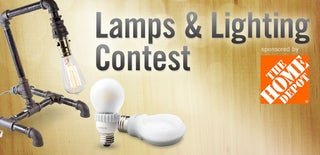Introduction: Paper Cut Shadow Box
Inspired by Hari & Deepti, my friend and I decided to make a romantic Zelda + Link paper cut shadow box (silhouette box? back lit box? whatever these things are called) for a neato personal birthday present! (Also makes a perfect wedding gift.) Mounted on a wall, or sitting on a desk, it provides a fair amount of glow and looks pretty cool too.
Basically, paper cut-outs are layered on each other in a box with a glass frame. A light source goes behind the cut outs, and makes each layer glow. Generally, the more layers, the cooler the effect! I'll show how I made this shadow box, providing tips here and there. Feel free to give some input and tips (first instructable).
(This instructable may involve sharp tools, nails and hot glue. If you're underage, this is a great project to do with your parents.)
Let's get started!
Step 1: Materials
Here's what you may need (be creative!):
- Ruler
- Cutting device (box cutter, exacto knife, laser cutter... etc. Make sure it's sharp and precise, unless you don't care about torn edges!)
- Pencil
- Eraser
- Blue tape/lint roller (to pick up on any stray lint/pet hair)
Paper Cutouts:
- Foam paper (for spacers)
- White card stock paper *
- Tracing/carbon paper (or a printer)
- Tissue paper (for water layers)
- Laminating sheets (orstiffening agent for tissue paper)
Box:**
- A Glass/plastic panel (ie. picture frame, plexiglass, etc)
- Wood
- Wood Glue
- Decorative paper/spray paint
- Sandpaper
- Hot Glue/Sealant (optional)
- Clamps (optional)
- Nails/screws
- Picture mounting kit (if hanging)
Lighting:
- LED strip lights*** (White /RGB)
- Power adapter
- Twisty ties/ string
- Wall hook/hanging device (eg. staples, hooks, bent nails, etc)
A few things to consider:
*Type of cardstock
Different paper weights and surface textures give off slightly different effects. You might end up weirdo-creeping, but experiment by shining a light behind papers! If you can't (or won't), get anything stiff enough to keep a shape, like poster paper or Strathmore 400 Series Mixed Media Pads (unjust comparison shown in pic).
**Box size
We wanted something large for a bare wall, like a 11x14 inch photo frame. We had to make it from scratch. You can always buy pre-made boxes, like shadow boxes!
***Type of lighting
You may or may not want multiple colors (eg. multi-color LEDs can make a noticeable difference when you're attempting white, because 3 separate colors combine to produce white. Makes a neat aurora borealis/rainbow though!). Brighter lights may also make for a more uniform light.
Step 2: Outline
1. Draw an outline of all the layers you plan on having, based on the size you want (eg. 11x14").
Add a border (~0.5") on each layer. No important details near the border, unless you don't mind it hidden away.
You can use an art program (and print/laser cut each layer onto card stock). ...Or you can be cheap like me! Draw the outline in one layer, manually. (And make mistakes with a pen.)
2. Number each layer on the outline for easy reference.
Note:
1. For the water (layer #9 & #6), use a thin weight paper; papers like tracing/tissue lets you see the back layers better! Reinforce the shape with laminate paper/tape/something.
2. Be mindful of your overlapping layers! Light will still somewhat shine through the card stock, but more overlap means less light shining through, so you can see the layers:
- (yellow-ish pic, layers 11 & 12) A dark outline appears between the bunny cloud and the cloud behind it.
- (white-ish pic, layers 5 & 4) The cliff shows behind the girl.
- (white or yellow pic, layers 1 & 2/3) The back tree layer's leaves were cut out to give more depth(?) to the tree.
3. Consider the number of layers you're working with. Foam board makes each layer ~3/16" thick, and we lazily settled with 12 layers (2.5 inches total). More layers give more depth into your box, but same some space (maybe 1"+) for your lights!
Step 3: Paper Layers
1. Print (or trace out each layer with your tracing paper) onto your card stock/tissue paper. Number each layer to your outline along some inconspicuous border.
2. Cut out each layer (don't forget about the borders!)
When cutting (for blades like exacto knives), aim for one deep, clean pass for a spot (with extra scrap paper padding underneath). Using dull blades or trying to pull off parts that aren't completely cut can result in some ugly fuzzy tears. Especially for lots of layers, you might want to wrap some cloth/paper around the grip of your cutting device. ...It can get painful.
3. Cut out all your foam spacer bits (4 squares and 4 bars for the corners and sides of each paper layer)
4. Stick spacers to sides and corners of each layer (if you have a water layer like #8 and can't add spacers everywhere, add an additional bit of foam on top of the layer next to it.) Now you have your layers!
Step 4: Box (Optional)
If you bought a box, good for you! Skip to the next step.
If you wanted to make a box, read on. (Or not, ha. A better box could have been made, like a sliding box, minus the fancy gadgetry, for easy fixing of inside contents)
1. Measure the thickness of your paper layers, plus about 1+ inch room for lights, picture frame (we decided on the glass picture frame) and backing. This is the depth of the box. (3" would work for our box, but we were lazy, and used the entire 4" board. In hindsight, it probably would have been more useful to save the extra for the framing/backing of the box...)
2. Measure the length and width of your frame. Measure out the thickness of the wood, and add that to your length and width measurements. (Eg. the picture frame was 11x14". The wood was super thin--1/8" (0.125"). So, we had 11.125" x 4" (x2) and 14.125" x 4" (x2) boards.) The back panel of the box is just the length so 14" x 4" for us (you can add a little extra and shave off excess later, just in case it turns out too small for some reason).
(if our wood were thicker, I'd probably cut box joints and suffer from trying to cut and fit them by hand, ha)
3. Cut out the pieces (5 total), and wood glue the sides of the box together, minus the back panel (4 pieces). Clamp sides together, or if you don't have a clamp like us, tape it, and cross your fingers! Set aside the back panel for the end.
4. Add in the picture frame/plexiglass (remove picture frame backings, if necessary), and glue it down! We used thick coats, enough to put a seal on every crack and inner corner. We used hot glue, but you're probably better off with something heat resistant, like... epoxy? (in case your lights decide to overheat).
5. Cut your front frame (we used cardstock, traced the outline of the box, drew a .75" border and cut out the front frame). Glue on the frame. (We had small gap, and added a bit of foam prevent it from sinking in.)
6. Shave off uneven corners, and sand it all down smooth. Clean off dust, and decorate. (We spray painted. You can always glue paper, try (faux) leathering, etc.)
Step 5: Assembly & Lights
After you have your box and layers done, it's time to put it all together.
If you're working with a box with an opening in the back:
1. Cut two sheets of card stock paper to fit snug inside your box.
2. Place each of your layers into the box, fix any loose ends, and cover with a snug sheet of card stock.
3. Arrange your lights to illuminate all the areas you'd like. Since we used RGB LEDs thinking it was cheapo and cool to have multiple colors (which kinda is), we had to deal with spots of reds, greens, and blues everywhere. We distanced the lights to the back of the box to help diffuse the lights, and covered the top portion of LEDs to lower the concentration of rainbow up top. The bundle was tied up with twisty ties, and hung along the sides of the box, with wall hooks.
4. Cut out a small portion of the box, enough for a hole to slip in the cables to the lights. Cover the back with another snug sheet of card stock. Nail on picture hanging... mounts to the back of the box/back panel (and the panel onto the box, towards the top)
If you have a box that only opens in the front, hmm. Tie together your arranged layers snug as a bug. Then experiment. >_>;;
Once you're done, hang it on your wall (the bubble level helps), or on your table. Plug in the lights, and admire your work!

Participated in the
Wedding Contest

Participated in the
Lamps and Lighting

Participated in the
Maker Family Contest









